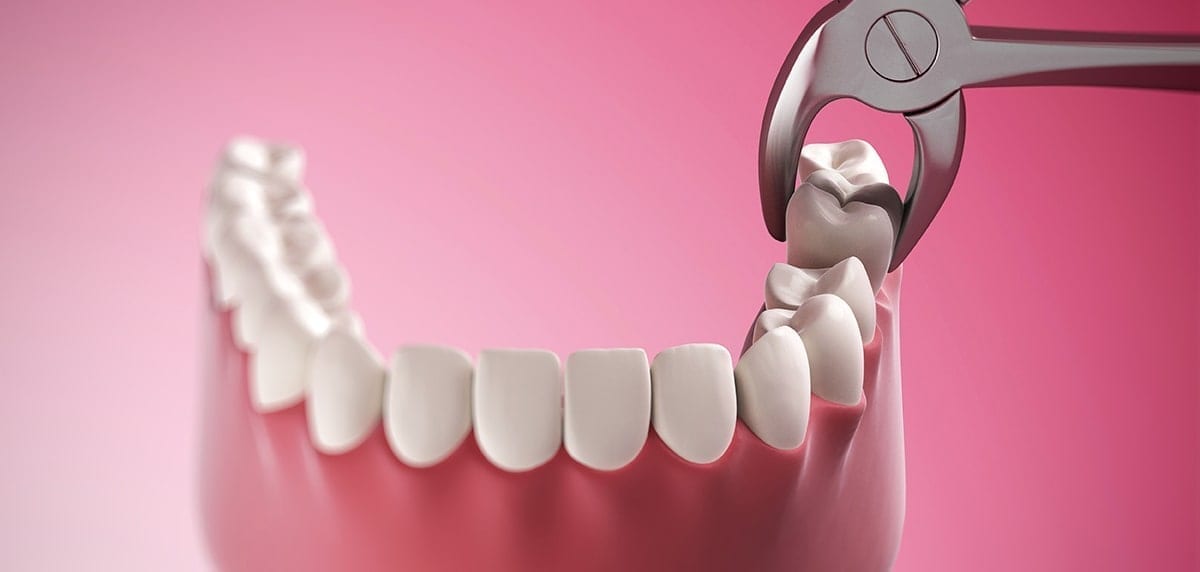Let’s be honest, losing a tooth as an adult isn’t exactly a walk in the park. Whether it was a rogue hockey puck, a stubborn candy, or just plain bad luck, that gap in your smile can feel… well, noticeable. Maybe even a little disheartening. You’re not alone! Millions of adults experience tooth loss each year. In fact, studies show that by the age of 50, Americans have an average of 12 missing teeth (including wisdom teeth). That’s a lot of gaps!
But here’s the good news: losing a tooth doesn’t have to mean living with a hole in your smile (or your confidence). Modern dentistry has come a long way, and there are more fantastic options than ever before to replace that missing pearly white. Think of this as your friendly, comprehensive guide to navigating the world of tooth replacement. We’ll explore the different treatments available, weigh the pros and cons, and help you figure out the best path to getting your complete smile back.
If you’re in the Cypress, Texas area and thinking about your options, remember that for treatment visit cypress dental office. They can provide personalized advice tailored to your specific needs.
So, take a deep breath. You’ve got this. Let’s dive in!
Why Replacing a Missing Tooth Matters (More Than Just Aesthetics)
You might be thinking, “Okay, a missing tooth isn’t ideal for photos, but is it really that big of a deal?” The answer is a resounding yes! While the cosmetic aspect is certainly a factor (and a valid one!), replacing a missing tooth offers several crucial benefits for your overall oral health and well-being:
- Preventing Shifting Teeth: Your teeth are a team. When one member goes missing, the others can start to drift into the empty space. This can lead to misalignment, making it harder to clean your teeth and potentially affecting your bite.
- Maintaining Proper Bite: A missing tooth can alter the way your upper and lower teeth come together, which can put extra stress on your remaining teeth, jaw joints, and even lead to temporomandibular joint (TMJ) disorders.
- Supporting Facial Structure: Your teeth help support the structure of your face. A missing tooth, especially in a visible area, can sometimes cause the surrounding facial tissues to sag slightly.
- Improving Chewing and Speech: Depending on the location of the missing tooth, you might find it harder to properly chew certain foods or even pronounce certain words clearly.
According to the American Dental Association (ADA), replacing missing teeth can help maintain the integrity of your jawbone and prevent further dental problems . So, it’s not just about looking good; it’s about keeping your mouth healthy and functioning properly.
Your Options for Replacing That Missing Tooth
Alright, let’s get to the nitty-gritty: what are your choices for filling that gap? Here are the most common and effective dental treatments available:
1. Dental Implants: The Gold Standard
Think of a dental implant as a tiny, super-strong artificial tooth root, usually made of titanium. It’s surgically placed into your jawbone, where it fuses with the bone over time (a process called osseointegration). Once healed, a custom-made artificial tooth (called a crown) is attached to the implant, creating a replacement that looks, feels, and functions remarkably like your natural tooth.
The Upsides of Dental Implants:
- Durability and Longevity: With proper care, dental implants can last a lifetime.
- Natural Look and Feel: They are designed to blend seamlessly with your existing teeth.
- Bone Stimulation: Implants help stimulate the jawbone, preventing bone loss that can occur with other tooth replacement options.
- Stability: Because they’re anchored in the bone, implants are very stable and won’t slip or move.
- No Impact on Adjacent Teeth: Unlike bridges, implants don’t require altering the teeth next to the gap.
The Downsides of Dental Implants:
- Cost: Implants are generally the most expensive tooth replacement option upfront.
- Time: The entire process, from initial consultation to final crown placement, can take several months.
- Surgery Required: Implant placement is a surgical procedure.
- Not Always Suitable: Sufficient jawbone density is needed for implant placement. In some cases, a bone graft may be required.
If you’re considering a long-term, natural-feeling solution, dental implants are often considered the gold standard. To learn more about whether you’re a good candidate, you can always reach out to a dental professional. And remember, for treatment visit cypress dental office in Texas.
2. Dental Bridges: Bridging the Gap
A dental bridge is a prosthetic tooth (or teeth) that fills the gap created by one or more missing teeth. It’s anchored in place by crowns placed on the adjacent natural teeth (called abutment teeth). These crowned teeth support the artificial tooth (or pontic) that sits in the gap.
The Upsides of Dental Bridges:
- More Affordable Than Implants: Generally, bridges are less expensive than dental implants.
- Faster Treatment Time: The process of getting a bridge is typically quicker than getting an implant.
- Restores Function and Aesthetics: Bridges effectively fill the gap, restoring your ability to chew and smile confidently.
The Downsides of Dental Bridges:
- Requires Altering Adjacent Teeth: The abutment teeth need to be filed down to accommodate the crowns.
- Doesn’t Prevent Bone Loss: Unlike implants, bridges don’t stimulate the jawbone.
- Can Be More Difficult to Clean: The area under the pontic can be tricky to clean, potentially increasing the risk of decay in the abutment teeth.
- Shorter Lifespan Than Implants: Bridges typically last for 5 to 15 years, depending on care.
A dental bridge can be a reliable option for many people, especially if the adjacent teeth already have large fillings or crowns.
3. Removable Partial Dentures: A Removable Solution

A removable partial denture is a prosthetic appliance that replaces one or more missing teeth. It typically consists of replacement teeth attached to a gum-colored plastic 1 or metal base, which is held in place by clasps that attach to your remaining natural teeth.
The Upsides of Removable Partial Dentures:
- Most Affordable Option: Partial dentures are generally the least expensive tooth replacement option.
- Non-Invasive: No surgery is required.
- Relatively Quick to Fabricate: The process of getting a partial denture is usually faster than implants or bridges.
The Downsides of Removable Partial Dentures:
- Less Stable Than Fixed Options: Partial dentures can sometimes shift or feel less secure than implants or bridges.
- Can Affect Taste and Speech Initially: Some people find it takes time to get used to wearing a partial denture.
- May Need to Be Removed at Night: Most dentists recommend removing partial dentures before sleeping.
- Can Cause Irritation: The clasps and base can sometimes irritate the gums.
Removable partial dentures can be a good temporary solution or a more budget-friendly option for replacing missing teeth.
Choosing the Right Treatment for You: What to Consider
So, how do you decide which of these options is the best fit for you? Several factors come into play:
- Number and Location of Missing Teeth: A single missing tooth might be ideally suited for an implant, while multiple missing teeth could be addressed with a bridge or partial denture.
- Your Overall Oral Health: The health of your gums and jawbone will influence whether you’re a good candidate for certain treatments, especially dental implants.
- Your Budget: The cost of each treatment varies significantly.
- Your Preferences: Do you prioritize a long-lasting, fixed solution like an implant, or are you looking for a more immediate and affordable option?
The best way to determine the right treatment plan for your specific situation is to consult with a dentist. They can evaluate your oral health, discuss your options, and help you make an informed decision. If you’re in the Cypress area, remember you can for treatment visit cypress dental office to get personalized advice.
Taking Care of Your Tooth Replacement
No matter which tooth replacement option you choose, proper care is essential for its longevity and your overall oral health.
- Dental Implants: Care for implants just like your natural teeth – brush twice a day, floss daily, and see your dentist for regular checkups and cleanings.
- Dental Bridges: Pay extra attention to cleaning under the pontic (the artificial tooth) using floss threaders or interdental brushes. Continue your regular brushing and flossing routine for the rest of your teeth.
- Removable Partial Dentures: Remove your partial denture daily and clean it with a denture brush and cleanser. Rinse your mouth after removing the denture. Don’t forget to brush your remaining natural teeth and gums as well.
The Importance of Protecting Your Remaining Teeth (and Your Replacements!)
While we’re talking about teeth, let’s touch on something crucial for preventing future tooth loss and protecting your existing smile (and any replacements you might get): managing teeth grinding (bruxism).
Teeth grinding, often happening unconsciously during sleep, can put significant stress on your teeth, leading to chips, cracks, wear, and even tooth loss. If you suspect you might be grinding your teeth, it’s essential to address it. One effective way to protect your teeth from the damaging effects of grinding is by using a mouthguard.
There are various types of mouthguards available, but a custom-fitted mouthguard from your dentist is often the best mouthguard for teeth grinding. These are made to precisely fit your teeth, providing optimal comfort and protection. Over-the-counter mouthguards are also available, but they may not offer the same level of protection and can sometimes be bulky or uncomfortable.
If you’re experiencing symptoms of teeth grinding, such as jaw pain, headaches, or worn-down teeth, talk to your dentist. They can assess your situation and recommend the best mouthguard for teeth grinding to safeguard your smile.
Real Talk: The Emotional Side of Tooth Loss
Losing a tooth can sometimes impact more than just your physical health. It can affect your self-confidence and how you feel about your appearance. It’s perfectly normal to feel a little self-conscious or even upset about a missing tooth.
Know that you’re not alone, and there are excellent solutions available to restore your smile and your confidence. Taking action to replace a missing tooth is an investment in your overall well-being, both physically and emotionally.
Moving Forward: Taking the Next Step
If you’ve recently lost a tooth or have been living with a gap in your smile, now is a great time to explore your replacement options. The first step is usually a consultation with a dentist. They can provide a thorough examination, discuss your individual needs and goals, and help you understand which treatment might be the best fit for you.
Remember, if you’re located in Cypress, Texas, you can for treatment visit cypress dental office to start your journey toward a complete and healthy smile. Don’t hesitate to reach out and learn more about how they can help you.
Losing a tooth can feel like a setback, but with the advancements in modern dentistry, it doesn’t have to be a permanent one. There are fantastic ways to restore your smile, your confidence, and your oral health. We hope this guide has been helpful in understanding your options.
Frequently Asked Questions (FAQs)
-
How long does the dental implant process typically take? The dental implant process can vary depending on individual circumstances, but it generally takes several months. This includes the time for the implant to integrate with the bone (osseointegration), which can take 3-6 months, followed by the placement of the abutment and crown.
-
Is getting a dental implant painful? The placement of a dental implant is typically done under local anesthesia, so you shouldn’t feel pain during the procedure. Afterward, you might experience some mild discomfort, similar to what you might feel after other dental procedures, which can usually be managed with over-the-counter pain medication.
-
How much do different tooth replacement options typically cost? The cost of tooth replacement varies widely depending on the treatment chosen, the number of missing teeth, and other factors. Generally, removable partial dentures tend to be the least expensive, followed by dental bridges, and then dental implants, which are often the most costly upfront but can offer long-term value. It’s best to discuss the specific costs with your dental provider.
-
How do I know if I’m a good candidate for a dental implant? The best way to determine if you’re a good candidate for a dental implant is to have a consultation with a dentist. They will assess your overall oral health, the amount of bone in your jaw, and discuss your medical history to determine if implants are a suitable option for you.
-
What is the best way to prevent future tooth loss? Preventing future tooth loss involves practicing good oral hygiene, including brushing twice a day, flossing daily, and having regular dental checkups and cleanings. Avoiding sugary foods and drinks, and protecting your teeth from injury (e.g., by wearing a mouthguard during sports) are also important. If you grind your teeth, using the best mouthguard for teeth grinding as recommended by your dentist can also help protect your teeth.





